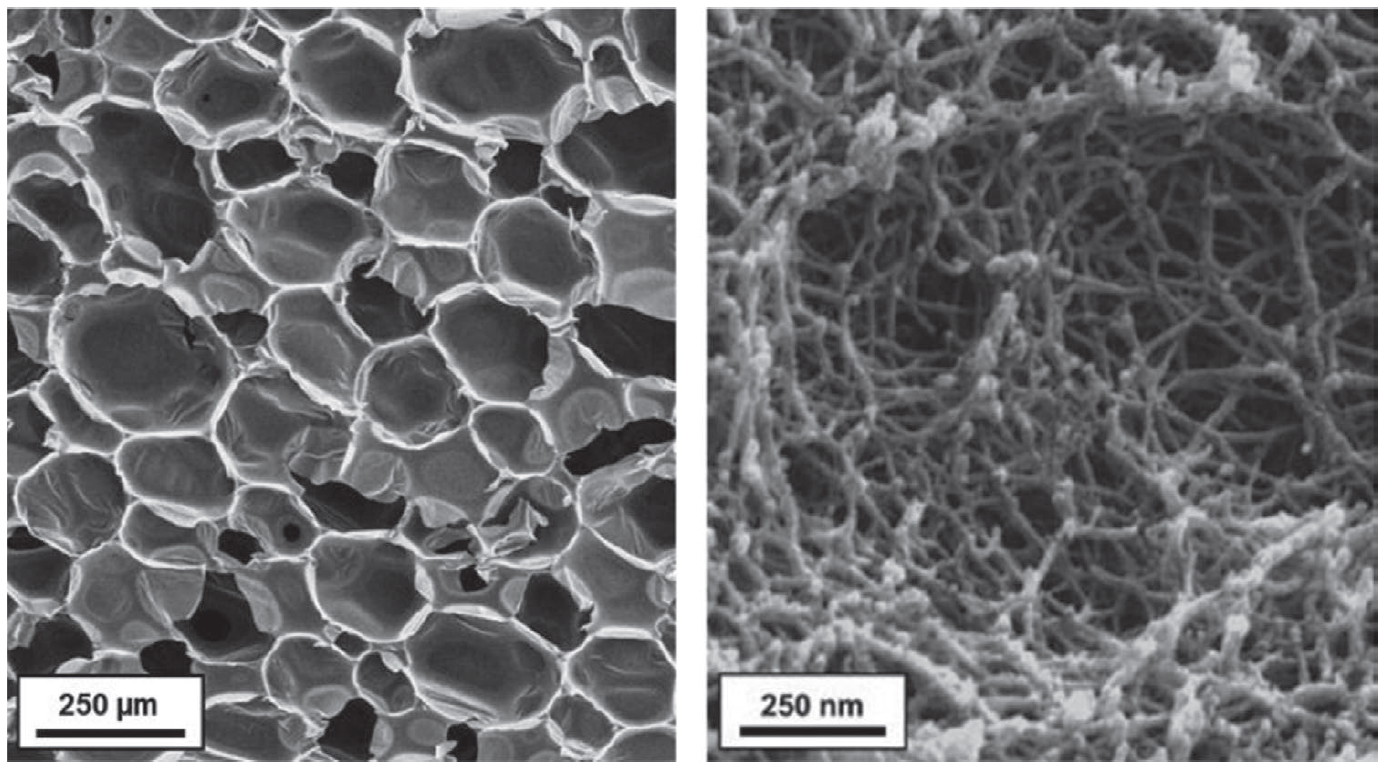Polyurethane (PU) Insulation: Repowered Performance

Polyurethane (PU) Insulation is highly efficient and widely employed. The escalating demand for energy consumption standards underscores the need to repower it.
Now, let’s delve into the second part. Securely, you’ll discover actionable insights that empower you to remain competitive and innovative.
You can also read: Silent Polyurethane Tires for Electric Vehicles, Exploring Supercritical Foaming Technology
Closed rigid PU is renowned for its exceptional insulation properties. However, legal pressures regarding energy consumption standards drive the demand for innovative thermal insulation materials. The foam morphology, material properties, and cell gases significantly influence heat transfer. Among these factors, the blowing agent is crucial in determining thermal conductivity.
HFO Instead HC – The Sustainable and Nonflammable Way

Scanning electron microscope images of conventional closed cell PU rigid foam (left) and PU aerogel (right). Courtesy of Advance Science News.
Traditionally, hydrocarbons (HCs) have been the most common blow agents, The HCs and exhibit thermal conductivities from 0.013 to 0.015 W/(m·K), zero ozone depletion potential (ODP), and low greenhouse warming potential (GWP), Although it is highly flammable, the PU Industry found suitable ways to employ them from economic and technical perspective. Recently, a new class of blowing agents emerged: Hydrofluoroolefins (HFOs). HFOs exhibit thermal conductivities between 0.010 and 0.011 W/(m·K), lower than HCs while remaining nonflammable. Notably, Opteon 1100 from Chemours is a promising HFO contender.
Open-celled Rigid Polyurethane (PU) Foam Feasible
Open-celled rigid foam becomes feasible for the insulation panels industry, which seeks the lowest energy consumption ratings and vacuum demand. At pressures below 0.001 kPa, these foams achieve thermal conductivities ranging from 0.005 to 0.009 W/(m·K). The application should be special and well-defined to invest more than in a closed-cell rigid foam
Innovative Approach for Insulation Repowering
An alternative approach involves reducing thermal conduction through the gas phase by shrinking cell sizes to the nanometer scale. Enter PU aerogels—a novel class of PU-based insulation materials that operate independently of blowing agents. These aerogels exhibit extremely low thermal conductivity (ranging from 0.015 to 0.018 W/(m·K)), along with air permeability and mechanical robustness. BASF’s semicommercial PU, Slentite, is currently undergoing testing in high-end applications such as thermal edges, appliances, and building renovations. Notably, it combines low thermal conductivity with humidity control and zero blow agent reliance.
The evolution of polyurethane insulation materials holds immense promise for enhancing energy efficiency and sustainability, something that many people didn’t see possible, until now. Let’s continue the discussion on these fascinating topics.
To read more: Current and Future Trends in Polyurethanes: An Industrial Perspective
